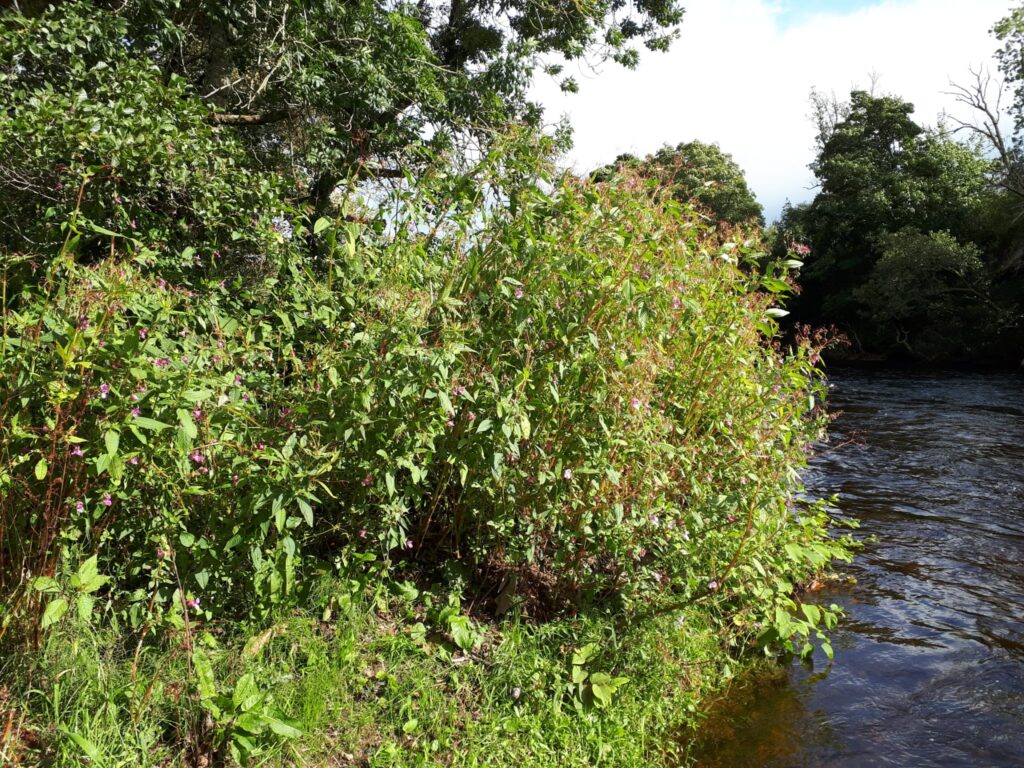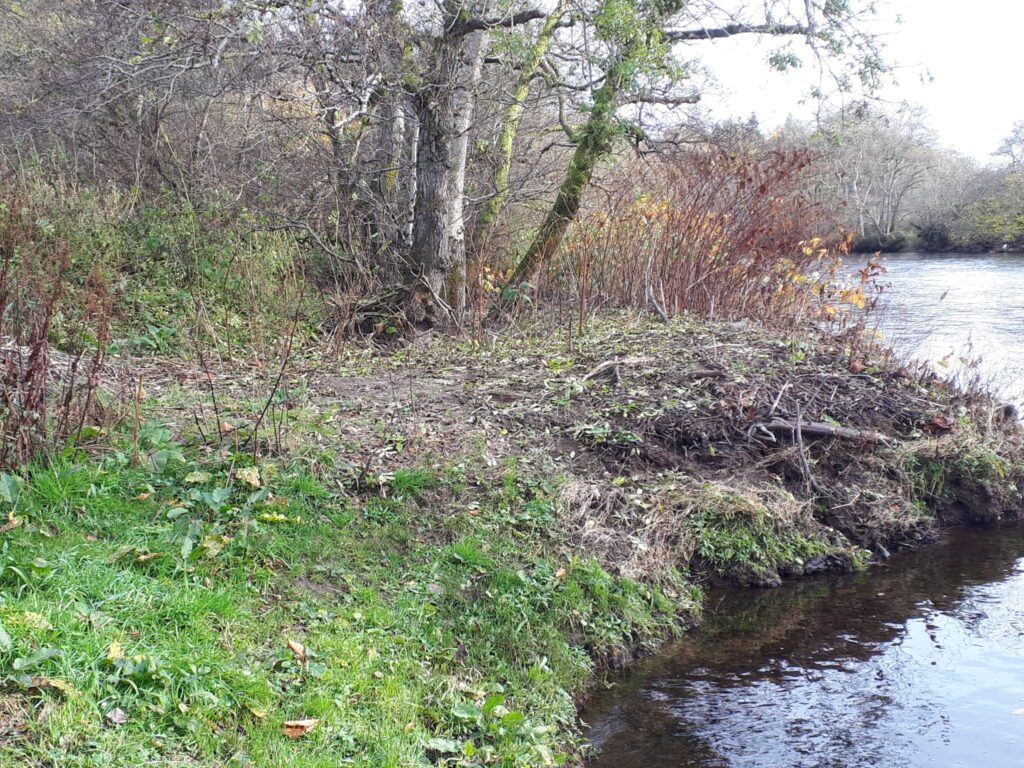The Association cannot tackle this on its own but has in the past used contractors to carry out spraying to try and mitigate the spread of invasives. We also engaged with the Tay District Salmon Fisheries Board (TDSFB) to utilise their resources to scope and hopefully assist with resources for the future spraying of invasives. The scoping of the Upper Earn identified in excess 50,000 square metres of Japanese Knotweed.
The Project Officer of The Scottish Invasive Species Initiative (SISI) responsible for the Tay catchment area made a presentation at our AGM in April 2024 on the work SISI are carrying out on the eradication of invasive non native species (INNS) on the main stem of the Tay and stated that they planned to start work on the Earn in 2026. Following a discussion at the AGM, it was agreed that REIA would explore funding options to allow us to undertake containment work on INNS in 2024 and 2025 focussing on the upper Earn, and thereafter to be able to support SISI’s eradication activities on the Earn.
The SISI project is in its final year of funding from the current provider, and they are in negotiations with a new one to hopefully secure the future of the project for the long term from 2026 onwards. It is currently envisioned that SISI would get directly involved with control on the Earn in the 2026 season at the upstream end of the problem. Thereafter, organising a progressive top down strategy with REIA and other stakeholders on the river as upstream areas are brought under full control and project staff gain a better understanding of the issues in the Earn system.
More information about SISI and their work can be found on their website at https://www.invasivespecies.scot
We are pleased to report that we applied for and were awarded a grant from Perth & Kinross Council’s Nature Restoration Fund (PKNRF). This grant was for 4 volunteers to gain the requisite qualifications to allow them to carry out treatment of invasives, mainly Japanese knotweed and for the purchase of equipment, chemicals and PPE. Training was successfully completed in mid July and treatment carried out in September and October 2024.
BEFORE:

AFTER:

The TDSFB scoping exercise was updated and the results of this and treatment work carried out were shared with SISI. Each qualified person can supervise 1 other person, so that doubles the available manpower. The actual costs incurred, and grant funded ended up at £5,545. REIA have committed to continuing containment work by volunteers in 2025 and to replace chemicals and PPE as required.
We received further funding from PKNRF for 2025 and now have 2 more people qualified. Each local angling clubs now has at least 1 qualified person available to carry out containment work on their own beats as well as support the wider containment activities in 2025 and thereafter support SISI. The grant also covered equipment and PPE.
